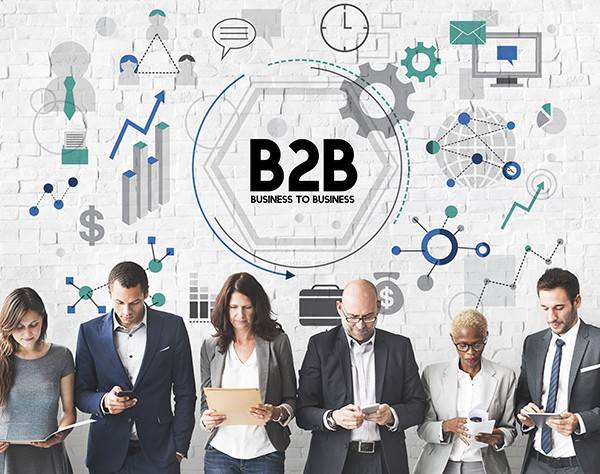The B2B SaaS industry is always changing; from new technologies and changing customer demands and expectations to better ways of reaching customers.
Moreover, the SaaS market is expected to hit $339 billion in revenue by 2024, and by 2029, it could grow to $819 billion. B2B SaaS providers must refine their subscription strategies to capture this phenomenal growth.
 Here are some key trends in B2B SaaS subscription models that every business owner should know to stay competitive.
Here are some key trends in B2B SaaS subscription models that every business owner should know to stay competitive.
1. Strengthening Compliance and Data Security
Data security has always been a concern for B2B SaaS providers, but it’s becoming even more critical now. As SaaS providers expand globally and adopt new tech, they face increasing regulatory requirements.
New regulations like the Artificial Intelligence (AI) Act, the Data Act, and the Health Data Space Regulation are emerging. These rules focus on ensuring ethical AI practices, transparent data handling, and user privacy.
Meeting these standards is important to avoid legal trouble as AI becomes a bigger part of SaaS. Plus SaaS users want providers who ensure data security because it builds trust, not just to avoid fines.
2. Adopting Usage-Based Pricing Models
According to Attrock, adopting the ideal sales model is important for any B2B SaaS business, especially startups. Plus, pricing is a big deal in SaaS and users are seeking flexible options.
And that’s why usage-based pricing (or pay-per-use pricing) is increasingly becoming an attractive option. With this model, you charge your customers on how much they use your product or service, rather than a flat subscription fee.
This model is appealing because:
- Fair pricing as users only pay for what they need, simplifying budgeting and increasing predictability.
- Enhances customer satisfaction and retention.
- Aligns the cost of the software with the business’s actual usage, making it more scalable.
However, adopting this model means you’ll need to rethink how you forecast revenue and develop your product. You’ll also need to have the right systems to accurately track and manage customer usage.
Additionally, as mentioned in the Younium revenue recognition guide, the B2B SaaS business must comply with ASC 606 and IFRS 15 revenue recognition standards. It helps those avoid adverse legal obligations and predict real revenue growth for their companies.
3. Vertical-Specific SaaS Solutions
As the demand for tailored solutions grows, businesses increasingly seek solutions that address their specific needs.
Vertical SaaS answers this call.
This is a specialized solution designed for a specific industry or sector, unlike horizontal SaaS, which serves multiple industries. Think of software tailored to meet the unique needs of healthcare, construction, or finance businesses.
So, instead of relying on generic software, companies can adopt solutions that are deeply embedded with their industry’s compliance standards, processes, and terminology.
This means industry-specific KPIs, metrics, and dashboards, allowing for more relevant data insights. It also provides improved data governance, helping businesses adhere to regulations specific to their sector. Plus, it offers better flexibility, with customization options that allow companies to fine-tune features based on their operations.
4. Embracing Self-Service Onboarding
Instead of the usual lengthy setup process with lots of back-and-forth, customers want to get started faster independently. In fact, 60% of SaaS users prefer self-service.
With self-service onboarding, users can set up, configure, and begin using SaaS products without direct human assistance and with minimal friction.
B2B SaaS businesses are achieving this by:
- Simplifying products so new users can get started easily.
- Integrating video tutorials, in-app guides, and automated walkthroughs.
- Providing robust knowledge bases and customer forums for independent troubleshooting.
- Using analytics to track user onboarding and address friction points.
Self-service onboarding improves operational efficiency, shortens the time to value for users, and cuts down on your support costs. Plus, it empowers users to engage with the product without extensive support.
5. Heightened Adoption of Artificial Intelligence (AI) and Machine Learning (ML)
AI and ML are no longer just buzzwords in B2B SaaS; they’re transforming operations with smarter tools for better decision-making, efficiency, and personalized experiences. SmallBusinessHQ explored top AI-powered CRM that can help manage and provide personalized information about your customers.
Recent data shows that 72% of B2B SaaS businesses have adopted AI. Here’s how AI and ML are impacting the industry:
- Analyzing user data to provide tailored recommendations.
- Automating routine tasks so you can focus on strategic business growth and innovation.
- Adjusting content, interfaces, and pricing based on user behavior and engagement levels.
- Identifying trends in user data, helping you make informed, customer-centric decisions.
- Predicting future user needs and guiding proactive updates and features.
- Automating and optimizing various marketing tasks like audience targeting, content creation, customer segmentation, and more.
Additionally, B2B SaaS companies specializing in niche areas, such as pre-award grant research software, are leveraging AI to streamline funding opportunities, optimize proposal development, and enhance compliance with grant requirements.
As AI and ML evolve, expect more tailored solutions that help B2B SaaS businesses operate smarter, not harder.
Conclusion
The rapid changes the B2B SaaS industry is experiencing are undeniable. As a business owner, keeping up with these changes isn’t just about staying relevant; it’s about thriving in a competitive market. Adopt these trends to help you better meet customer needs, improve user experiences, and drive sustainable growth for your SaaS business.

Founder Dinis Guarda
IntelligentHQ Your New Business Network.
IntelligentHQ is a Business network and an expert source for finance, capital markets and intelligence for thousands of global business professionals, startups, and companies.
We exist at the point of intersection between technology, social media, finance and innovation.
IntelligentHQ leverages innovation and scale of social digital technology, analytics, news, and distribution to create an unparalleled, full digital medium and social business networks spectrum.
IntelligentHQ is working hard, to become a trusted, and indispensable source of business news and analytics, within financial services and its associated supply chains and ecosystems









